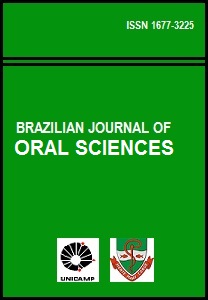Abstract
Aim: This in vitro study evaluated the cariogenic and erosive potential of different industrialized fruit juices available in the Brazilian market. Methods: Twenty-five samples of fruit juices were analyzed physically and chemically by means of the following parameters: pH, titratable acidity (TA) and total soluble solid content (TSSC), reducing sugars (e.g.: glucose), non-reducing sugars (e.g.: sucrose) and total sugars. The analyses were made in triplicate. Data were collected by a single examiner and were recorded in study-specific charts. Data were statistically analyzed by ANOVA and Tukey’s post-test (p<0.05). Results: All fruit juices showed pH below the critical value of 5.5, with significant differences among the samples (p<0.0001). Mango juice (Jandaia®) presented the lowest TSSC (10.25 oBrix), while orange juice (Del Valle®) presented the highest TSSC (12.75 o Brix), with no significant differences among the samples. The lowest and the highest TA values were recorded for cashew juice (Jandaia®) (0.13%) and passion fruit (Del Valle®) (0.52%), respectively (p<0.0001). For reducing sugars (glucose), the highest value was recorded for purple fruit juice (Skinka®) (10.85 g/100mL) and the lowest was recorded for strawberry juice (Kapo®) (1.84 g/100mL). Regarding non-reducing sugars (sucrose), the values ranged from 0.45 g/100mL (passion fruit/Del Valle®) to 9.07 g/100mL (orange/Del Valle®). Purple fruit juice (Skinka®) presented the highest total sugars content (12.09 g/100mL), while guava juice (Jandaia®) presented the lowest content (7.25 g/100mL). There were significant differences among the samples for reducing, non-reducing and total sugars (p<0.0001). Conclusions: The industrialized fruit juices evaluated in this study presented low pH and a high total sugar content, differing in their erosive and cariogenic potential, respectively.The Brazilian Journal of Oral Sciences uses the Creative Commons license (CC), thus preserving the integrity of the articles in an open access environment.
Downloads
Download data is not yet available.

